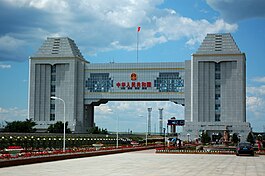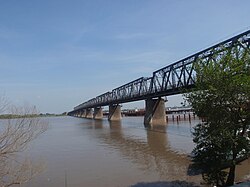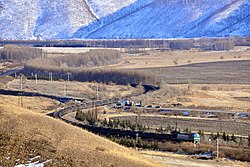| Trans-Siberian Harbin–Manzhouli railway | ||||||||||||||||||||||||||||||||||||||||||||||||||||||||||||||||||||||||||||||||||||||||||||||||||||||||||||||||||||||||||||||||||||||||||||||||||||||||||||||||||||||||||||||||||||||||||||||||||||||||||||||||||||||||||||||||||||||||||||||||||||||||||||||||||||||||||||||||||||||||||||||||||||||||||||||||||||||||||||||||||||||||||||||||||||||||||||||||||||||||||||||||||||||||||||||||||||||||||||||||||||||||||||||||||||||||||||||||||||||||||||||||||||||||||||||||||||||||||||||||||||||||||||||||||||||||||||||||||||||||||||||||||||||||||||||||||||||||||||||||||||||||||||||||||||||||||||||||||||||||||||||||||||||||||||||||||||||||||||||||||||||||||||||||||||||||||||||||||||||||||||||||||||||||||||||||||||||||||||||||||||||||||||||||||||||||||||||||||||||||||||||||||||||||||||||||||||||||||||||||||||||||||||||||||
|---|---|---|---|---|---|---|---|---|---|---|---|---|---|---|---|---|---|---|---|---|---|---|---|---|---|---|---|---|---|---|---|---|---|---|---|---|---|---|---|---|---|---|---|---|---|---|---|---|---|---|---|---|---|---|---|---|---|---|---|---|---|---|---|---|---|---|---|---|---|---|---|---|---|---|---|---|---|---|---|---|---|---|---|---|---|---|---|---|---|---|---|---|---|---|---|---|---|---|---|---|---|---|---|---|---|---|---|---|---|---|---|---|---|---|---|---|---|---|---|---|---|---|---|---|---|---|---|---|---|---|---|---|---|---|---|---|---|---|---|---|---|---|---|---|---|---|---|---|---|---|---|---|---|---|---|---|---|---|---|---|---|---|---|---|---|---|---|---|---|---|---|---|---|---|---|---|---|---|---|---|---|---|---|---|---|---|---|---|---|---|---|---|---|---|---|---|---|---|---|---|---|---|---|---|---|---|---|---|---|---|---|---|---|---|---|---|---|---|---|---|---|---|---|---|---|---|---|---|---|---|---|---|---|---|---|---|---|---|---|---|---|---|---|---|---|---|---|---|---|---|---|---|---|---|---|---|---|---|---|---|---|---|---|---|---|---|---|---|---|---|---|---|---|---|---|---|---|---|---|---|---|---|---|---|---|---|---|---|---|---|---|---|---|---|---|---|---|---|---|---|---|---|---|---|---|---|---|---|---|---|---|---|---|---|---|---|---|---|---|---|---|---|---|---|---|---|---|---|---|---|---|---|---|---|---|---|---|---|---|---|---|---|---|---|---|---|---|---|---|---|---|---|---|---|---|---|---|---|---|---|---|---|---|---|---|---|---|---|---|---|---|---|---|---|---|---|---|---|---|---|---|---|---|---|---|---|---|---|---|---|---|---|---|---|---|---|---|---|---|---|---|---|---|---|---|---|---|---|---|---|---|---|---|---|---|---|---|---|---|---|---|---|---|---|---|---|---|---|---|---|---|---|---|---|---|---|---|---|---|---|---|---|---|---|---|---|---|---|---|---|---|---|---|---|---|---|---|---|---|---|---|---|---|---|---|---|---|---|---|---|---|---|---|---|---|---|---|---|---|---|---|---|---|---|---|---|---|---|---|---|---|---|---|---|---|---|---|---|---|---|---|---|---|---|---|---|---|---|---|---|---|---|---|---|---|---|---|---|---|---|---|---|---|---|---|---|---|---|---|---|---|---|---|---|---|---|---|---|---|---|---|---|---|---|---|---|---|---|---|---|---|---|---|---|---|---|---|---|---|---|---|---|---|---|---|---|---|---|---|---|---|---|---|---|---|---|---|---|---|---|---|---|---|---|---|---|---|---|---|---|---|---|---|---|---|---|---|---|---|---|---|---|---|---|---|---|---|---|---|---|---|---|---|---|---|---|---|---|---|---|---|---|---|---|---|---|---|---|---|---|---|---|---|---|---|---|---|---|---|---|---|---|---|---|---|---|---|---|---|---|---|---|---|---|---|---|---|---|---|---|---|---|---|---|---|---|---|---|---|---|---|---|---|---|---|---|---|---|---|---|---|---|---|---|---|---|---|---|---|---|---|---|---|---|---|---|---|---|---|---|---|---|---|---|---|---|---|---|---|---|---|---|---|---|---|---|---|---|---|---|---|---|---|---|---|---|---|---|---|---|---|---|---|---|---|---|---|---|---|---|---|---|---|---|---|---|---|---|---|---|---|---|---|---|---|---|---|---|---|---|---|---|---|---|---|---|---|---|---|---|---|---|---|---|---|---|---|---|---|---|---|---|---|---|---|---|---|---|---|---|---|---|---|---|---|---|---|---|---|---|---|---|---|---|---|---|---|---|---|---|---|---|---|---|---|---|---|---|
 Sino-Russian border crossing at Manzhouli. Sino-Russian border crossing at Manzhouli. | ||||||||||||||||||||||||||||||||||||||||||||||||||||||||||||||||||||||||||||||||||||||||||||||||||||||||||||||||||||||||||||||||||||||||||||||||||||||||||||||||||||||||||||||||||||||||||||||||||||||||||||||||||||||||||||||||||||||||||||||||||||||||||||||||||||||||||||||||||||||||||||||||||||||||||||||||||||||||||||||||||||||||||||||||||||||||||||||||||||||||||||||||||||||||||||||||||||||||||||||||||||||||||||||||||||||||||||||||||||||||||||||||||||||||||||||||||||||||||||||||||||||||||||||||||||||||||||||||||||||||||||||||||||||||||||||||||||||||||||||||||||||||||||||||||||||||||||||||||||||||||||||||||||||||||||||||||||||||||||||||||||||||||||||||||||||||||||||||||||||||||||||||||||||||||||||||||||||||||||||||||||||||||||||||||||||||||||||||||||||||||||||||||||||||||||||||||||||||||||||||||||||||||||||||||
| Overview | ||||||||||||||||||||||||||||||||||||||||||||||||||||||||||||||||||||||||||||||||||||||||||||||||||||||||||||||||||||||||||||||||||||||||||||||||||||||||||||||||||||||||||||||||||||||||||||||||||||||||||||||||||||||||||||||||||||||||||||||||||||||||||||||||||||||||||||||||||||||||||||||||||||||||||||||||||||||||||||||||||||||||||||||||||||||||||||||||||||||||||||||||||||||||||||||||||||||||||||||||||||||||||||||||||||||||||||||||||||||||||||||||||||||||||||||||||||||||||||||||||||||||||||||||||||||||||||||||||||||||||||||||||||||||||||||||||||||||||||||||||||||||||||||||||||||||||||||||||||||||||||||||||||||||||||||||||||||||||||||||||||||||||||||||||||||||||||||||||||||||||||||||||||||||||||||||||||||||||||||||||||||||||||||||||||||||||||||||||||||||||||||||||||||||||||||||||||||||||||||||||||||||||||||||||
| Native name | 滨洲铁路 (Bīnzhōu Tiělù) | |||||||||||||||||||||||||||||||||||||||||||||||||||||||||||||||||||||||||||||||||||||||||||||||||||||||||||||||||||||||||||||||||||||||||||||||||||||||||||||||||||||||||||||||||||||||||||||||||||||||||||||||||||||||||||||||||||||||||||||||||||||||||||||||||||||||||||||||||||||||||||||||||||||||||||||||||||||||||||||||||||||||||||||||||||||||||||||||||||||||||||||||||||||||||||||||||||||||||||||||||||||||||||||||||||||||||||||||||||||||||||||||||||||||||||||||||||||||||||||||||||||||||||||||||||||||||||||||||||||||||||||||||||||||||||||||||||||||||||||||||||||||||||||||||||||||||||||||||||||||||||||||||||||||||||||||||||||||||||||||||||||||||||||||||||||||||||||||||||||||||||||||||||||||||||||||||||||||||||||||||||||||||||||||||||||||||||||||||||||||||||||||||||||||||||||||||||||||||||||||||||||||||||||||||
| Status | Operational | |||||||||||||||||||||||||||||||||||||||||||||||||||||||||||||||||||||||||||||||||||||||||||||||||||||||||||||||||||||||||||||||||||||||||||||||||||||||||||||||||||||||||||||||||||||||||||||||||||||||||||||||||||||||||||||||||||||||||||||||||||||||||||||||||||||||||||||||||||||||||||||||||||||||||||||||||||||||||||||||||||||||||||||||||||||||||||||||||||||||||||||||||||||||||||||||||||||||||||||||||||||||||||||||||||||||||||||||||||||||||||||||||||||||||||||||||||||||||||||||||||||||||||||||||||||||||||||||||||||||||||||||||||||||||||||||||||||||||||||||||||||||||||||||||||||||||||||||||||||||||||||||||||||||||||||||||||||||||||||||||||||||||||||||||||||||||||||||||||||||||||||||||||||||||||||||||||||||||||||||||||||||||||||||||||||||||||||||||||||||||||||||||||||||||||||||||||||||||||||||||||||||||||||||||
| Owner | Chinese Eastern Railway (1902–1932) North Manchuria Railway (1932–1935) Manchukuo National Railway (1935–1945) China Changchun Railway (1945–1955) China Railway (since 1955) | |||||||||||||||||||||||||||||||||||||||||||||||||||||||||||||||||||||||||||||||||||||||||||||||||||||||||||||||||||||||||||||||||||||||||||||||||||||||||||||||||||||||||||||||||||||||||||||||||||||||||||||||||||||||||||||||||||||||||||||||||||||||||||||||||||||||||||||||||||||||||||||||||||||||||||||||||||||||||||||||||||||||||||||||||||||||||||||||||||||||||||||||||||||||||||||||||||||||||||||||||||||||||||||||||||||||||||||||||||||||||||||||||||||||||||||||||||||||||||||||||||||||||||||||||||||||||||||||||||||||||||||||||||||||||||||||||||||||||||||||||||||||||||||||||||||||||||||||||||||||||||||||||||||||||||||||||||||||||||||||||||||||||||||||||||||||||||||||||||||||||||||||||||||||||||||||||||||||||||||||||||||||||||||||||||||||||||||||||||||||||||||||||||||||||||||||||||||||||||||||||||||||||||||||||
| Locale | Heilongjiang, Inner Mongolia | |||||||||||||||||||||||||||||||||||||||||||||||||||||||||||||||||||||||||||||||||||||||||||||||||||||||||||||||||||||||||||||||||||||||||||||||||||||||||||||||||||||||||||||||||||||||||||||||||||||||||||||||||||||||||||||||||||||||||||||||||||||||||||||||||||||||||||||||||||||||||||||||||||||||||||||||||||||||||||||||||||||||||||||||||||||||||||||||||||||||||||||||||||||||||||||||||||||||||||||||||||||||||||||||||||||||||||||||||||||||||||||||||||||||||||||||||||||||||||||||||||||||||||||||||||||||||||||||||||||||||||||||||||||||||||||||||||||||||||||||||||||||||||||||||||||||||||||||||||||||||||||||||||||||||||||||||||||||||||||||||||||||||||||||||||||||||||||||||||||||||||||||||||||||||||||||||||||||||||||||||||||||||||||||||||||||||||||||||||||||||||||||||||||||||||||||||||||||||||||||||||||||||||||||||
| Termini | ||||||||||||||||||||||||||||||||||||||||||||||||||||||||||||||||||||||||||||||||||||||||||||||||||||||||||||||||||||||||||||||||||||||||||||||||||||||||||||||||||||||||||||||||||||||||||||||||||||||||||||||||||||||||||||||||||||||||||||||||||||||||||||||||||||||||||||||||||||||||||||||||||||||||||||||||||||||||||||||||||||||||||||||||||||||||||||||||||||||||||||||||||||||||||||||||||||||||||||||||||||||||||||||||||||||||||||||||||||||||||||||||||||||||||||||||||||||||||||||||||||||||||||||||||||||||||||||||||||||||||||||||||||||||||||||||||||||||||||||||||||||||||||||||||||||||||||||||||||||||||||||||||||||||||||||||||||||||||||||||||||||||||||||||||||||||||||||||||||||||||||||||||||||||||||||||||||||||||||||||||||||||||||||||||||||||||||||||||||||||||||||||||||||||||||||||||||||||||||||||||||||||||||||||||
| Stations | 102 | |||||||||||||||||||||||||||||||||||||||||||||||||||||||||||||||||||||||||||||||||||||||||||||||||||||||||||||||||||||||||||||||||||||||||||||||||||||||||||||||||||||||||||||||||||||||||||||||||||||||||||||||||||||||||||||||||||||||||||||||||||||||||||||||||||||||||||||||||||||||||||||||||||||||||||||||||||||||||||||||||||||||||||||||||||||||||||||||||||||||||||||||||||||||||||||||||||||||||||||||||||||||||||||||||||||||||||||||||||||||||||||||||||||||||||||||||||||||||||||||||||||||||||||||||||||||||||||||||||||||||||||||||||||||||||||||||||||||||||||||||||||||||||||||||||||||||||||||||||||||||||||||||||||||||||||||||||||||||||||||||||||||||||||||||||||||||||||||||||||||||||||||||||||||||||||||||||||||||||||||||||||||||||||||||||||||||||||||||||||||||||||||||||||||||||||||||||||||||||||||||||||||||||||||||
| Service | ||||||||||||||||||||||||||||||||||||||||||||||||||||||||||||||||||||||||||||||||||||||||||||||||||||||||||||||||||||||||||||||||||||||||||||||||||||||||||||||||||||||||||||||||||||||||||||||||||||||||||||||||||||||||||||||||||||||||||||||||||||||||||||||||||||||||||||||||||||||||||||||||||||||||||||||||||||||||||||||||||||||||||||||||||||||||||||||||||||||||||||||||||||||||||||||||||||||||||||||||||||||||||||||||||||||||||||||||||||||||||||||||||||||||||||||||||||||||||||||||||||||||||||||||||||||||||||||||||||||||||||||||||||||||||||||||||||||||||||||||||||||||||||||||||||||||||||||||||||||||||||||||||||||||||||||||||||||||||||||||||||||||||||||||||||||||||||||||||||||||||||||||||||||||||||||||||||||||||||||||||||||||||||||||||||||||||||||||||||||||||||||||||||||||||||||||||||||||||||||||||||||||||||||||||
| Type | Heavy rail, Regional rail | |||||||||||||||||||||||||||||||||||||||||||||||||||||||||||||||||||||||||||||||||||||||||||||||||||||||||||||||||||||||||||||||||||||||||||||||||||||||||||||||||||||||||||||||||||||||||||||||||||||||||||||||||||||||||||||||||||||||||||||||||||||||||||||||||||||||||||||||||||||||||||||||||||||||||||||||||||||||||||||||||||||||||||||||||||||||||||||||||||||||||||||||||||||||||||||||||||||||||||||||||||||||||||||||||||||||||||||||||||||||||||||||||||||||||||||||||||||||||||||||||||||||||||||||||||||||||||||||||||||||||||||||||||||||||||||||||||||||||||||||||||||||||||||||||||||||||||||||||||||||||||||||||||||||||||||||||||||||||||||||||||||||||||||||||||||||||||||||||||||||||||||||||||||||||||||||||||||||||||||||||||||||||||||||||||||||||||||||||||||||||||||||||||||||||||||||||||||||||||||||||||||||||||||||||
| Operator(s) | China Railway Harbin Group | |||||||||||||||||||||||||||||||||||||||||||||||||||||||||||||||||||||||||||||||||||||||||||||||||||||||||||||||||||||||||||||||||||||||||||||||||||||||||||||||||||||||||||||||||||||||||||||||||||||||||||||||||||||||||||||||||||||||||||||||||||||||||||||||||||||||||||||||||||||||||||||||||||||||||||||||||||||||||||||||||||||||||||||||||||||||||||||||||||||||||||||||||||||||||||||||||||||||||||||||||||||||||||||||||||||||||||||||||||||||||||||||||||||||||||||||||||||||||||||||||||||||||||||||||||||||||||||||||||||||||||||||||||||||||||||||||||||||||||||||||||||||||||||||||||||||||||||||||||||||||||||||||||||||||||||||||||||||||||||||||||||||||||||||||||||||||||||||||||||||||||||||||||||||||||||||||||||||||||||||||||||||||||||||||||||||||||||||||||||||||||||||||||||||||||||||||||||||||||||||||||||||||||||||||
| History | ||||||||||||||||||||||||||||||||||||||||||||||||||||||||||||||||||||||||||||||||||||||||||||||||||||||||||||||||||||||||||||||||||||||||||||||||||||||||||||||||||||||||||||||||||||||||||||||||||||||||||||||||||||||||||||||||||||||||||||||||||||||||||||||||||||||||||||||||||||||||||||||||||||||||||||||||||||||||||||||||||||||||||||||||||||||||||||||||||||||||||||||||||||||||||||||||||||||||||||||||||||||||||||||||||||||||||||||||||||||||||||||||||||||||||||||||||||||||||||||||||||||||||||||||||||||||||||||||||||||||||||||||||||||||||||||||||||||||||||||||||||||||||||||||||||||||||||||||||||||||||||||||||||||||||||||||||||||||||||||||||||||||||||||||||||||||||||||||||||||||||||||||||||||||||||||||||||||||||||||||||||||||||||||||||||||||||||||||||||||||||||||||||||||||||||||||||||||||||||||||||||||||||||||||||
| Opened | 14 January 1902 | |||||||||||||||||||||||||||||||||||||||||||||||||||||||||||||||||||||||||||||||||||||||||||||||||||||||||||||||||||||||||||||||||||||||||||||||||||||||||||||||||||||||||||||||||||||||||||||||||||||||||||||||||||||||||||||||||||||||||||||||||||||||||||||||||||||||||||||||||||||||||||||||||||||||||||||||||||||||||||||||||||||||||||||||||||||||||||||||||||||||||||||||||||||||||||||||||||||||||||||||||||||||||||||||||||||||||||||||||||||||||||||||||||||||||||||||||||||||||||||||||||||||||||||||||||||||||||||||||||||||||||||||||||||||||||||||||||||||||||||||||||||||||||||||||||||||||||||||||||||||||||||||||||||||||||||||||||||||||||||||||||||||||||||||||||||||||||||||||||||||||||||||||||||||||||||||||||||||||||||||||||||||||||||||||||||||||||||||||||||||||||||||||||||||||||||||||||||||||||||||||||||||||||||||||
| Technical | ||||||||||||||||||||||||||||||||||||||||||||||||||||||||||||||||||||||||||||||||||||||||||||||||||||||||||||||||||||||||||||||||||||||||||||||||||||||||||||||||||||||||||||||||||||||||||||||||||||||||||||||||||||||||||||||||||||||||||||||||||||||||||||||||||||||||||||||||||||||||||||||||||||||||||||||||||||||||||||||||||||||||||||||||||||||||||||||||||||||||||||||||||||||||||||||||||||||||||||||||||||||||||||||||||||||||||||||||||||||||||||||||||||||||||||||||||||||||||||||||||||||||||||||||||||||||||||||||||||||||||||||||||||||||||||||||||||||||||||||||||||||||||||||||||||||||||||||||||||||||||||||||||||||||||||||||||||||||||||||||||||||||||||||||||||||||||||||||||||||||||||||||||||||||||||||||||||||||||||||||||||||||||||||||||||||||||||||||||||||||||||||||||||||||||||||||||||||||||||||||||||||||||||||||||
| Line length | 935 km (581 mi) | |||||||||||||||||||||||||||||||||||||||||||||||||||||||||||||||||||||||||||||||||||||||||||||||||||||||||||||||||||||||||||||||||||||||||||||||||||||||||||||||||||||||||||||||||||||||||||||||||||||||||||||||||||||||||||||||||||||||||||||||||||||||||||||||||||||||||||||||||||||||||||||||||||||||||||||||||||||||||||||||||||||||||||||||||||||||||||||||||||||||||||||||||||||||||||||||||||||||||||||||||||||||||||||||||||||||||||||||||||||||||||||||||||||||||||||||||||||||||||||||||||||||||||||||||||||||||||||||||||||||||||||||||||||||||||||||||||||||||||||||||||||||||||||||||||||||||||||||||||||||||||||||||||||||||||||||||||||||||||||||||||||||||||||||||||||||||||||||||||||||||||||||||||||||||||||||||||||||||||||||||||||||||||||||||||||||||||||||||||||||||||||||||||||||||||||||||||||||||||||||||||||||||||||||||
| Track gauge | 1,435 mm (4 ft 8+1⁄2 in) standard gauge | |||||||||||||||||||||||||||||||||||||||||||||||||||||||||||||||||||||||||||||||||||||||||||||||||||||||||||||||||||||||||||||||||||||||||||||||||||||||||||||||||||||||||||||||||||||||||||||||||||||||||||||||||||||||||||||||||||||||||||||||||||||||||||||||||||||||||||||||||||||||||||||||||||||||||||||||||||||||||||||||||||||||||||||||||||||||||||||||||||||||||||||||||||||||||||||||||||||||||||||||||||||||||||||||||||||||||||||||||||||||||||||||||||||||||||||||||||||||||||||||||||||||||||||||||||||||||||||||||||||||||||||||||||||||||||||||||||||||||||||||||||||||||||||||||||||||||||||||||||||||||||||||||||||||||||||||||||||||||||||||||||||||||||||||||||||||||||||||||||||||||||||||||||||||||||||||||||||||||||||||||||||||||||||||||||||||||||||||||||||||||||||||||||||||||||||||||||||||||||||||||||||||||||||||||
| Old gauge | 1,520 mm (4 ft 11+27⁄32 in) Russian gauge | |||||||||||||||||||||||||||||||||||||||||||||||||||||||||||||||||||||||||||||||||||||||||||||||||||||||||||||||||||||||||||||||||||||||||||||||||||||||||||||||||||||||||||||||||||||||||||||||||||||||||||||||||||||||||||||||||||||||||||||||||||||||||||||||||||||||||||||||||||||||||||||||||||||||||||||||||||||||||||||||||||||||||||||||||||||||||||||||||||||||||||||||||||||||||||||||||||||||||||||||||||||||||||||||||||||||||||||||||||||||||||||||||||||||||||||||||||||||||||||||||||||||||||||||||||||||||||||||||||||||||||||||||||||||||||||||||||||||||||||||||||||||||||||||||||||||||||||||||||||||||||||||||||||||||||||||||||||||||||||||||||||||||||||||||||||||||||||||||||||||||||||||||||||||||||||||||||||||||||||||||||||||||||||||||||||||||||||||||||||||||||||||||||||||||||||||||||||||||||||||||||||||||||||||||
| Electrification | 25 kV 50 Hz AC overhead line Harbin-Manzhouli & Zabaikalsk-Karymskaya Section | |||||||||||||||||||||||||||||||||||||||||||||||||||||||||||||||||||||||||||||||||||||||||||||||||||||||||||||||||||||||||||||||||||||||||||||||||||||||||||||||||||||||||||||||||||||||||||||||||||||||||||||||||||||||||||||||||||||||||||||||||||||||||||||||||||||||||||||||||||||||||||||||||||||||||||||||||||||||||||||||||||||||||||||||||||||||||||||||||||||||||||||||||||||||||||||||||||||||||||||||||||||||||||||||||||||||||||||||||||||||||||||||||||||||||||||||||||||||||||||||||||||||||||||||||||||||||||||||||||||||||||||||||||||||||||||||||||||||||||||||||||||||||||||||||||||||||||||||||||||||||||||||||||||||||||||||||||||||||||||||||||||||||||||||||||||||||||||||||||||||||||||||||||||||||||||||||||||||||||||||||||||||||||||||||||||||||||||||||||||||||||||||||||||||||||||||||||||||||||||||||||||||||||||||||
| ||||||||||||||||||||||||||||||||||||||||||||||||||||||||||||||||||||||||||||||||||||||||||||||||||||||||||||||||||||||||||||||||||||||||||||||||||||||||||||||||||||||||||||||||||||||||||||||||||||||||||||||||||||||||||||||||||||||||||||||||||||||||||||||||||||||||||||||||||||||||||||||||||||||||||||||||||||||||||||||||||||||||||||||||||||||||||||||||||||||||||||||||||||||||||||||||||||||||||||||||||||||||||||||||||||||||||||||||||||||||||||||||||||||||||||||||||||||||||||||||||||||||||||||||||||||||||||||||||||||||||||||||||||||||||||||||||||||||||||||||||||||||||||||||||||||||||||||||||||||||||||||||||||||||||||||||||||||||||||||||||||||||||||||||||||||||||||||||||||||||||||||||||||||||||||||||||||||||||||||||||||||||||||||||||||||||||||||||||||||||||||||||||||||||||||||||||||||||||||||||||||||||||||||||||
Trans-Siberian Railway Harbin–Manzhouli railway, abbreviated as the Binzhou Railway (Chinese: 滨洲铁路; pinyin: Bīnzhōu tiělù), is a double-track electrified trunk railway in Northeast China between Harbin and Manzhouli on the Russian border, where it connects to the Trans-Siberian Railway via Zabaikalsk, Russia.
The Binzhou railway begins in the west at Manzhouli and runs eastward across the Hulunbuir grasslands, through the forests of the Greater Khingan range, the oilfields of Daqing, and the rich farmland of the Songhua River valley to Harbin. Major cities and towns along route include Manzhouli, Jalainur, Hailar, Dayan, Yakeshi, and Zhalantun in Inner Mongolia, as well as Qiqihar, Daqing, Anda, Zhaodong, and Harbin in Heilongjiang.
This line has the only station in all of China whose name is a single character: Song railway station (宋), which makes it a popular location amongst Chinese railfans.
History
The Qing government's special envoy Li Hongzhang went to Russia to congratulate Tsar Nicholas II on his coronation, and signed the Sino–Russian Secret Treaty on June 3, 1896; amongst other things, this treaty gave Russia the right to build a railway through northeast China - the Chinese Eastern Railway (CER). Harbin was selected to be the hub of the new railway system, with three Russian-gauge lines 1,520 mm (5 ft 0 in) envisioned heading east, west, and south from Harbin. Work on the western branch from Harbin to the Russian border at Manzhouli, then named the Haman Railway, commenced at both ends in June 1898, and was completed in 1902. The eastern branch of the CER ran from Harbin to Suifenhe. The entire CER served as an alternative route to the Trans-Siberian Railway.
The CER was a joint project of China and Russia, and after the Russo-Japanese War, the Japanese took over the southern portion of the CER, forming the South Manchuria Railway, with the northern portions remaining under Sino-Russian control. Following the October Revolution, the railway was controlled by White Russians for a time during the Russian Civil War, but from 1917 the government of the Republic of China began taking more control of the railway to itself, until in 1922 the CER was made officially a Sino-Soviet joint enterprise. However, in 1929 the Chinese seized complete control of the CER, storming the Soviet consulate in Harbin and arresting the officials of the CER. This led to the Sino-Soviet conflict of 1929, in which the Soviets quickly defeated the Chinese army and forced the Chinese to once again accept joint control of the railway. After the Mukden Incident, the Soviets retained control over the railway despite the Japanese occupation of northeastern China; after the establishment of Manchukuo in 1932, the CER became a joint Soviet-Manchukuo enterprise called the "North Manchuria Railway". In March 1935, the government of Manchukuo bought the Soviet share of the NMR for 140 million yen, and the entire network was taken over by the Manchukuo National Railway.
After the Manchukuo National took over the NMR network, it changed the name of the Harbin–Manzhouli railway from Haman Railway to Binzhou Line, and on 1 August 1936, conversion of the line from Russian broad gauge to standard gauge was completed, increasing the operating speed to 60 km/h (37 mph).
After the Soviet invasion of Manchuria and the subsequent collapse of Manchukuo, the Soviets once again took control of the region's railways, and converted the Binzhou Line back to Russian gauge; in 1946, the Northeast Democratic Coalition seized control of the line, and once again regauged it. After the creation of the People's Republic of China, the railways in the territory of the former Manchukuo were taken over by a new Sino-Soviet joint enterprise, called the China Changchun Railway. Full control of the China Changchun Railway was to be turned over to the PRC on 31 December 1952, but due to the Korean War this was delayed until 1955. The Harbin–Manzhouli line became part of China Railway at that time, and once again renamed, becoming the Binzhou Railway.
The Harbin-Manzhouli line has undergone substantial upgrades over the years. Double-tracking began in 1983, with the Harbin–Anda section being the first section to be completed, in 1985; the entire line was completed in 2007, when the Manzhouli–Hailar section was completed, increasing the line's capacity sixfold. In 1990, semi-automatic train control was introduced, with DFH3-class diesel locomotives on passenger trains, and DF4B-class diesels and Renmin-class steam locomotives on freight trains. Operating speed on the line was raised to 100 km/h (62 mph).
The Binzhou Railway Electrification Project was officially started on 25 October 2014. The entire 933 km (580 mi) of the line was wired, and 17 new traction substations were built. The first section, from Harbin to Qiqihar, was completed on 3 November 2016; the first electric-hauled train on the line was K7108, pulled by a HXD3D-class locomotive. The remaining section from Qiqihar to Manzhouli was energised on 11 December 2017.
The Eastern end of the route was quadruple tracked in 2015 with the opening of the Harbin–Qiqihar intercity railway, dedicated to passenger service, increasing the passenger-carrying capacity of this section.

The original Binzhou Railway Bridge was built in 1901, and was replaced by a new bridge in 2014. The old bridge is now a historical landmark protected by the city of Harbin.
Route

| Distance | Station name | ||||
|---|---|---|---|---|---|
| Total; km | S2S; km | Current name | Former name | Opened | Connections |
| 0 | 0 | Harbin 哈尔滨 |
Songhuajiang 松花江 |
1899 | Binbei Railway, Jingha Railway, Binsui Railway, Labin Railway, Binbei Railway |
| Songnan 松南 |
(service halt) | ||||
| 5 | 5 | Songbei 松北 |
1899 | ||
| 10 | 5 | Miaotaizi 庙台子 |
1899 | Jiangbei Connecting Line | |
| Wandong 万东 |
|||||
| Harbin North 哈尔滨北 |
2015 | ||||
| Dagengjia 大耿家 |
|||||
| 20 | Wanle 万乐 |
1899 | Wangwan Railway | ||
| 31 | 11 | Duiqingshan 对青山 |
1900 | ||
| 42 | 11 | Limudian 里木店 |
1900 | ||
| 52 | 10 | Jiangjia 姜家 |
1900 | ||
| 63 | 11 | Zhaodong 肇东 |
1900 | Haqi HSR | |
| 74 | 11 | Shangjia 尚家 |
1900 | ||
| 84 | 10 | Wulimu 五里木 |
1900 | ||
| 96 | 12 | Song 宋 |
1900 | ||
| 116 | 20 | Yangcao 羊草 |
1900 | ||
| 127 | 11 | Anda 安达 |
1900 | Haqi HSR | |
| 137 | 10 | Wolitun 卧里屯 |
1944 | ||
| 148 | 11 | Daqing East 大庆东 |
Longfeng 龙凤 |
1960 | Haqi HSR |
| 159 | 11 | Daqing 大庆 |
Saertu 萨尔图 |
1902 | |
| 170 | 11 | Daqing West 大庆西 |
Ranghulu 让胡路 |
Haqi HSR, Tongrang Railway | |
| 180 | 10 | Lamadian 喇嘛甸 |
1900 | ||
| 190 | 10 | Qijia 齐家 |
1960 | (freight only) | |
| 201 | 11 | 1949 | Closed | ||
| 212 | 11 | Dorbod 杜尔伯特 |
Taikang (泰康) Xiaohaozi (小蒿子) Малые станции саргассов |
1900 | Haqi HSR |
| 221 | 9 | Qianhoudai 前后代 |
1960 | ||
| 238 | 17 | Yantongtun 烟筒屯 |
1900 | ||
| 252 | 14 | Houwujia 后五家 |
1960 | ||
| 261 | 9 | Hongqiying 红旗营 |
1949 | Pingqi Railway | |
| 270 | 9 | Ang'angxi 昂昂溪 |
1900 | San'ang Connecting Line, Qi'ang Railway | |
| 277 | 7 | Wufu 五福 |
1958 | ||
| 284 | 7 | Fularji 富拉尔基 |
1900 | ||
| 293 | 9 | Hurhula 虎尔虎拉 |
1900 | ||
| 303 | 10 | Heigang 黑岗 |
1947 | ||
| 314 | 11 | Baishanxiang 白山乡 |
1949 | ||
| 323 | 9 | Longjiang 龙江 |
1900 | ||
| 333 | 10 | 1947 | Closed | ||
| 344 | 11 | Luhe 鲁河 |
1947 | ||
| 355 | 11 | Nianzishan 碾子山 |
1901 | ||
| 365 | 10 | Jixinhe 吉新河 |
1950 | ||
| 376 | 11 | 丰荣 |
1947 | Closed | |
| 384 | 8 | Genghis Khan 成吉思汗 |
1901 | ||
| 395 | 11 | Gulijin 古里金 |
1947 | ||
| 406 | 11 | Gaotaizi 高台子 |
1949 | ||
| 416 | 10 | Zhalantun 扎兰屯 |
1901 | Azha Railway | |
| 425 | 9 | Woniuhe 卧牛河 |
1901 | ||
| 435 | 10 | Sandaoqiao 三道桥 |
1901 | (passenger only) | |
| 446 | 11 | Halasu 哈拉苏 |
1902 | ||
| 456 | 10 | Nanmu 南木 |
1901 | ||
| 467 | 11 | Fulin 富林 |
1901 | (passenger only) | |
| 478 | 11 | Balin 巴林 |
1901 | ||
| 488 | 10 | Lamashan 喇嘛山 |
1901 | ||
| 498 | 10 | Zigou 紫沟 |
1901 | (passenger only) | |
| 510 | 12 | Yalu 雅鲁 |
1901 | ||
| 520 | 10 | Qishan 旗山 |
1901 | ||
| 527 | 7 | Goukou 沟口 |
1901 | ||
| 531 | 4 | 1987 | Closed | ||
| 539 | 8 | Boketu 博克图 |
Bugt Бугтъ |
1901 | Bolin Railway |
| 546 | 7 | Shali 沙力 |
1987 | (passenger only) | |
| 547 | 1 | Shangshali 上沙力 |
1990 | (freight only) | |
| 556 | 9 | Xinnangou 新南沟 |
1901 | (passenger only) | |
| 564 | 18 | Xing'anling 兴安岭 |
1901 | ||
| 574 | 10 | Yiliekede 伊列克得 |
1901 | (freight only) | |
| 582 | 8 | Xilingkou 西岭口 |
1901 | (passenger only) | |
| 592 | 10 | Halagou 哈拉沟 |
1901 | (passenger only) | |
| 604 | 12 | Wunur 乌奴耳 |
1901 | ||
| 609 | 5 | 1987 | Closed | ||
| 614 | 5 | 1901 | Closed | ||
| 623 | 9 | Beitouhe 北头河 |
1901 | (passenger only) | |
| 634 | 12 | Mianduhe 免渡河 |
1901 | ||
| 645 | 11 | Xiaobei 小北 |
1901 | ||
| 656 | 11 | Zhuoshan 卓山 |
1901 | (freight only) | |
| 667 | 11 | Yakeshi 牙克石 |
1901 | Yalin Railway | |
| 674 | 7 | Haiman 海满 |
1901 | (freight only) | |
| 685 | 11 | Dayan 大雁, ᠳᠶᠨ |
1901 | ||
| 694 | 9 | Zhaluomude 扎罗木得 |
1901 | ||
| 699 | 5 | 1987 | Closed | ||
| 721 | 22 | Hake 哈克 |
1901 | ||
| 730 | 9 | 1901 | Closed | ||
| 736 | 6 | 1987 | Closed | ||
| 742 | 6 | Hailar East 海拉尔东, ᠬᠠᠶᠢᠯᠠᠷ ᠳᠣᠷᠨᠣ |
1901 | Yimin Railway (freight only) | |
| 749 | 7 | Hailar 海拉尔, ᠬᠠᠶᠢᠯᠠᠷ |
1903 | ||
| 760 | 11 | 1901 | Closed | ||
| 771 | 11 | Daliang 大良 |
1901 | (passenger only) | |
| 780 | 9 | Wugunor 乌固诺尔 |
1901 | ||
| 789 | 9 | Wulanqiu 乌兰丘 |
1987 | (passenger only) | |
| 801 | 12 | Donggong 东宫 |
1987 | (passenger only) | |
| 811 | 10 | Wangong 完工 |
1901 | ||
| 822 | 11 | Doulun Halt 都伦乘降所 |
1901 | (passenger only) | |
| 833 | 11 | Lingqiu Halt 陵丘乘降所 |
1901 | (passenger only) | |
| 844 | 11 | He'erhongde 赫尔洪得 |
1901 | ||
| 855 | 11 | Huangde Halt 皇德乘降所 |
1901 | (passenger only) | |
| 866 | 11 | Haomen Halt 豪门乘降所 |
1987 | (passenger only) | |
| 874 | 8 | Cuogang 嵯岗 |
1901 | ||
| 885 | 11 | 1901 | Closed | ||
| 896 | 11 | Hubei Halt 湖北乘降所 |
1901 | (passenger only) | |
| 906 | 10 | Jalainur 扎赉诺尔, ᠵᠠᠯᠠᠢᠳᠨᠠᠭᠤᠷ |
1901 | ||
| 912 | 6 | Jalainur West 扎赉诺尔西, ᠵᠠᠯᠠᠢᠳᠨᠠᠭᠤᠷ ᠪᠠᠷᠠᠭᠣᠨ |
1898 | ||
| 919 | 7 | Donghao Halt 东壕乘降所 |
1898 | (passenger only) | |
| 927 | 8 | Lubin 胪滨 |
1898 | ||
| 935 | 8 | Manzhouli 满洲里, ᠮᠠᠨᠵᠤᠤᠷᠬᠣᠲᠠ |
Manchzhuriya Маньчжурия |
1901 | |
| China–Russia border | |||||
| 939 | 4 | Zabaikalsk Забайкальск |
1901 | Trans-Siberian Railway via Trans-Baikal Railway | |
References
- Thomas, Bryn (1988). Trans-Siberian Handbook. Brentford: Roger Lascelles. ISBN 0903909693.
- Quail Map Company (2008). China Railway Atlas (third ed.). Quail Map Company. ISBN 978-1-898319-82-5.
- "Northernmost PDL opens in Heilongjiang". Railway Gazette. Railway Gazette. Retrieved 5 December 2017.
- "Search for train number e.g. K7092,4188". Chinese Railways. Retrieved 6 December 2017.
- "Search for train number e.g. K7092,4188". China Passenger Train Maps. Retrieved 6 December 2017.
- ^ (Chinese) 滨洲铁路简介 Archived 2013-02-21 at archive.today Accessed 2011-01-31
- Thomas, Bryn (1988). Trans-Siberian Handbook. Brentford: Roger Lascelles. ISBN 0903909693.
- Quail Map Company (2008). China Railway Atlas (third ed.). Quail Map Company. ISBN 978-1-898319-82-5.
- "在"火车吧"里话别铁道部-中国青年报". zqb.cyol.com.
- Strauss, Robert (1987). Trans-Siberian Rail Guide. Chalfont St Peter: Bradt Publications. ISBN 0946983062.
- (Chinese) "哈尔滨铁路的百年历史发展" Tieliu Archived 2011-02-09 at the Wayback Machine Accessed 2011-01-31
- ^ (Chinese) 滨洲铁路海拉尔至满洲里段复线全线通车 中国铁路网 Archived 2013-02-22 at archive.today 2007-12-05
- 百年滨洲铁路进入电气化时代
- "百年滨洲铁路接触网工程全线成功送电". Archived from the original on 2017-12-26. Retrieved 2018-02-05.
- "Northernmost PDL opens in Heilongjiang". Railway Gazette. Retrieved 5 December 2017.
- (Chinese) "哈尔滨滨洲铁路桥等19处建筑申报全国重点文物保护单位"